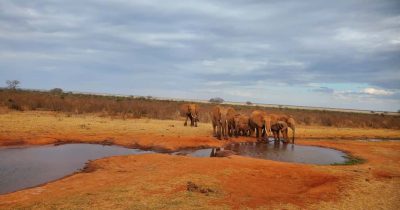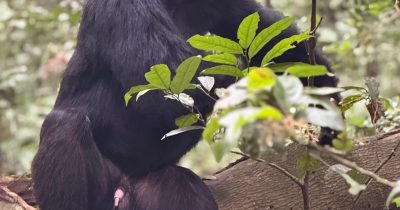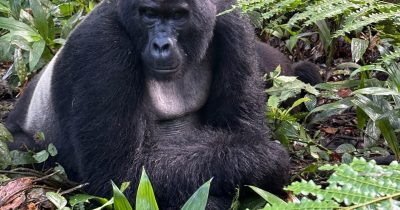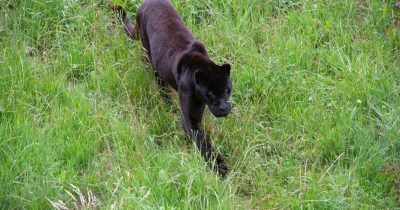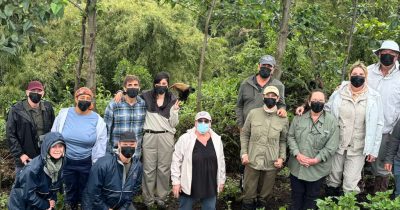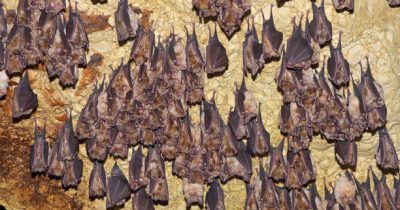Black Rhino Tracking in Samburu
Black rhino tracking in Samburu is done with the lead of an experienced guide and involves walking on foot to find rhinos. On this unusual wilderness experience, expect to unearth the behaviors of rhinos in detail. An experienced and well-trained guide will be available to unpack for you every detail about the black rhinos in Samburu Wildlife Reserve. Samburu National Reserve lies in the Northern part of Kenya and is home to a section of black rhinos, whose population currently stands at 2000 individuals in the wild. Today, Samburu is a renowned remotest destination in Kenya and is most popular for its black rhinos.
![]()
Black rhinos were re-introduced to Samburu after over 25 years when they disappeared due to poaching. Today, rhinos in Samburu are monitored by authorities using various techniques including GPS, radio collars as well as infrared sensors. These are used to help keep track of the rhino movement. The black rhino sanctuary (Sera Community Conservancy) is currently fenced expanding up to 54,000 ha. It is here where over 18 rhinos survive and a perfect place to enjoy walking safaris with rhinos. To start the rhino tracking, your driver guide can take you up to where your trek will begin. He leaves the vehicles and you begin your guided foot tour as you search for rhinos as they graze. Black rhino tracking is such a mesmerizing wilderness experience.
When to go for black rhino tracking in Samburu
The best time to visit Samburu for rhino tracking is around the long dry months that is from July, August, and September to October. These months are characterized by clear skies, and low or no rains. The other favorable dry months to consider for you to explore Samburu are December, January, February, and March.
How to book black rhino tracking in Samburu
Planning and booking black rhino tracking is easier when dealing with local tour operators such as Native Africa Tours. Reach us via the active email or contact us directly at +256 75 939 2905. Our team is readily available to assist you in crafting the most rewarding travel itinerary. Once everything is sorted, especially on the trip plan, our team will send an invoice such that you make a deposit.
After payment for your rhino tour has been made, notification will be received through our account. Please, all the money should be paid via the active accounts provided to you by our reservation team. You should also consider booking your entire trip about 2 to 3 years before the actual date of visiting Samburu to track rhinos. Be aware of the high demand during the peak months of the year (June to October).
What do you need to visit Kenya to track black rhinos?
A valid tourist visa is essential for visitors with plans to explore the black rhinos. You can secure your visa early before you travel to Kenya and interestingly, your local expert can guide you on how to book your Kenya tourist visa.
More about Samburu
Samburu National Reserve is an endowed wildlife reserve with abundant fauna species and is most popular for its special 5 games. The special 5 games in Samburu include the Somali Ostriches, Beisa Oryx, Gerenuk, Reticulated giraffes, and Grevy’s zebras. It forms part of the Samburu-Laikipia ecosystem where several other wildlife live. These include cape buffaloes, jackals, hippos, Dik-diks, impalas, Klipspringers, cheetahs, warthogs, olive baboons, elands, mongoose, leopards, hyenas, and over 450 species of birds.
The birds in Samburu include the blue-necked Somali ostriches, Egyptian vultures, the golden-breasted starling, Kori bustards, martial eagle, sulphur-breasted bush shrike, yellow-billed hornbills, white-headed mousebirds, secretary-bird, black-faced sand grouse, black-capped social weaver bird, white-bellied bustard, and rosy-patched bush shrike.
Other birds include yellow-vented remotely, gray-backed camaroptera, yellow-necked francolins, little grebe, coqui francolins, vulturine guineafowl, buff-crested bustard, African cuckoos, Klaas’s cuckoos, white-bellied go-away bird, Sombre nightjar, water thick-knee, blacksmith lapwing, three-banded plovers, spur-winged lapwing, black-winged stilt, African darter, long-tailed cormorant, temminck’s courser and cormorants and shags.
Additional birds to identify on a birding tour in Samburu include Fischer’s lovebird, Nubian woodpeckers, lesser honey guide, lanner falcon, Eurasian hobby, sooty falcon, pygmy batis, red-bellied parrot, brubru Nilaus, and Isabelline shrike.
The Big 3 cats
Samburu is most popular not only for the special five but also for the 3 cats. The big cats to find in Samburu Reserve include leopards, cheetahs, and lions. These can easily be encountered as they drink water along the Ewaso Nyiro River or as they hunt.
Additional Activities in Samburu
Game/Wildlife Viewing
Game viewing in Samburu allows you to enjoy the sight of wildlife. This is best done during morning and afternoon game drives. The diverse wildlife to find on game viewing in Samburu Wildlife Reserve includes cape buffaloes, lions, reticulated giraffes, Oryx, gazelles, warthogs, zebras, gerenuk, impalas, leopards, African elephants, bushbucks, aardvark, and more.
Bird watching
Samburu is most popular not only for game drives/rhino tracking but also for its enriching birding experiences. A birding tour in Samburu allows you to spot numerous bird species including the hunter’s sunbird, spotted palm thrush, chestnut weaver bird, brown-tailed rock chat, singing bush lark, vulturine guineafowl, and yellow-vented eremomela. Keen birders can also come across Somali bee-eaters, lanner falcon, pygmy falcon, taita falcon, Eurasian kestrel, the golden-breasted starling, African pam swift, white-headed mouse bird, secretary bird, rosy-patched bush-shrike, red-winged lark and others.
Walking tours
Guided bush walks are a must-do in Samburu. A guided walking excursion involves exploring the savanna grassland and hard-to-reach sites. Among numerous species of animals to encounter here include gerenuk, grevy’s zebras, rhinos, and several others as they confine around the water sources to take water.
Mountain biking
If you enjoy biking, then the best place to be is in Samburu. On a biking tour, expect to enjoy views of the lush vegetation, and Scenic River and also sight numerous birds.
Cultural tours
Adjacent to the Samburu Reserve are the Samburu people, the nomadic pastoralists. Embarking on a guided cultural safari here is a great opportunity to explore more about the local’s unique cultures, norms, and traditions.
Camelback riding
Another exceptional way to explore Samburu is by embarking on camelback riding. A camelback ride allows you to enjoy the stunning views of Samburu Game Reserve while spotting some of your favorite animals.
Where to stay on a black rhino tracking safari in Samburu?
Samburu is a complete wildlife destination in Kenya with plenty of accommodation choices. They include among others Sasaab Camp, Elephant Bedroom Camp. Saruni Samburu, Samburu Sopa Lodge, Samburu Intrepid. Samburu Riverside Tented Camp, and Ashnil Samburu Camp.
How to get to Samburu National Park?
Samburu National Reserve lies in the Southeastern part of Samburu District, about 345 km away from Nairobi’s capital. Getting to Samburu is possible by road, about 6 hours using a classic 4×4 safari vehicle from Native Africa Tours. To get to this reserve, expect to navigate via the scenic countryside, villages, and breathtaking landscapes. Additional routes guests can take to reach Samburu include Chuka, Embu, and Meru.
By air, you can also take a domestic flight up to Samburu starting from Wilson Airport in Nairobi’s capital city. At Samburu, you can land in any of the three airstrips; Kalama Airstrip, Buffalo Springs Airstrip, and Samburu Oryx Airstrip. Domestic flights to Samburu are made by airlines such as Air Kenya and Safari Link.
